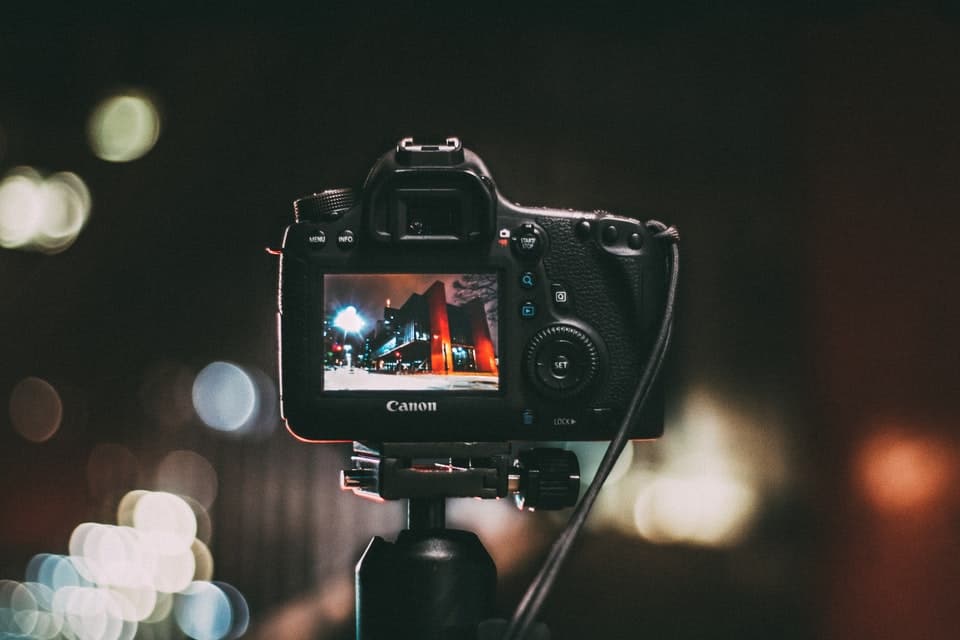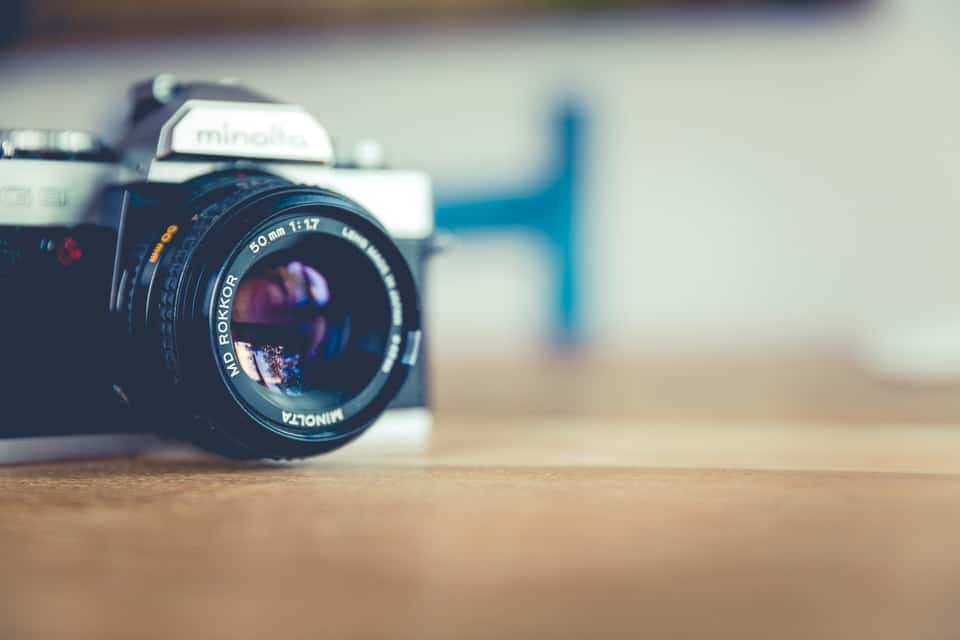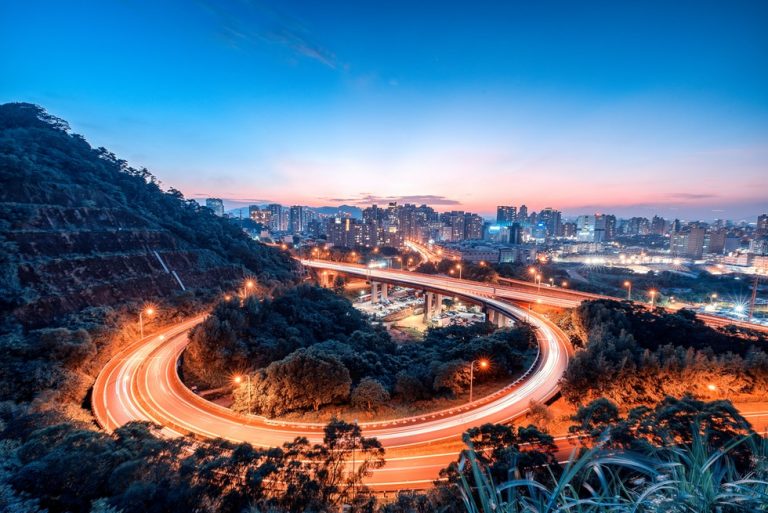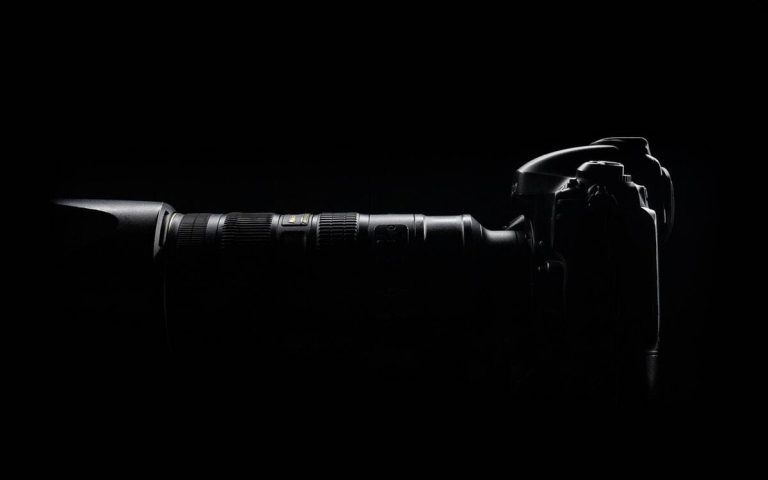Are you trying to decide between point and shoot vs. DSLR? You’re not alone. Both of these are viable choices if you’re focusing on image quality, but neither is right for everyone. Here’s what you should know about them.
Are High-Quality Megapixels a Must?
Yes and no. More megapixels means greater detail in any photograph, and if you’re focusing exclusively on the quality of the image, then more control over the image is always going to be better. You can have features like an auto mode, a wide depth of field, or various other fully automatic systems, but none of those matter unless your final image has enough quality to look good.
That said, how many megapixels do you need? Digital cameras can go over 100 megapixels if you’re willing to invest, but most people don’t need more than 30 or so. If you’re only taking pictures to display on small screens or print in books, people may not notice the difference from a higher megapixel count, and you don’t need the visual control that more megapixels offer.
Digital cameras come with varying quality in their final images from factors like the image sensor, the optical viewfinder, and the camera body. Regardless of megapixel count, you may need interchangeable lenses and change lenses to fit the situation, control the lighting for your shoot, and otherwise manage the environment you’re using digital cameras in.
In terms of the DSLR vs. point-and-shoot cameras debate, DSLRs can have a higher maximum megapixel count, but even point and shoots can have 20+ megapixels. You don’t need an expensive camera body or the ability to change lenses to get a reasonable number of megapixels on a camera, although options like an optical viewfinder can help with the shots.

DSLR Camera Basics
DSLR cameras are a specific type of digital cameras, and certainly one of the most popular types currently on the market. The acronym stands for “Digital Single-Lens Reflex”, and the main difference between DSLR and other digital cameras is the fact that the viewfinder displays an accurate optical view rather than projecting a control image onto a screen.
Despite the optical display for images, DSLR cameras still help you control the image by allowing you to adjust the auto mode, change the depth of field, and even function as a point and shoot camera if needed.
In the debate of mirrorless vs. DSLR, DSLR cameras are generally better and offer more control of the final image. The human eye has incredible image quality, and even the most advanced camera can’t display an image as sharp as the human eye can see. If you’re not sure whether to go DSLR vs. mirrorless, select either price or image quality as your priority and go from there.
Note that all point and shoot cameras are technically mirrorless and offer no direct optical control. However, in this context, we’re using the term to refer to cameras that use digital display previews instead of an optical viewfinder. These are not the same as proper point and shoot cameras, as we’ll discuss more later.
There’s one other thing to consider about DSLRs: The use of lenses. Unlike a point and shoot camera, which don’t require any external lenses, DSLR cameras must use appropriate external lenses in order to take the best shots and control the image. Fixed lenses that offer a specific zoom level produce the best results, but variable zoom lenses are good enough for most situations.
Keep in mind that lenses can be extremely expensive. I’ve seen some lenses that cost more than the cameras they’re mounted on, and the amount of work that goes into producing professional-grade lenses justifies the cost. It’s not cheap or easy to control production for high-end photography equipment.
Highlights of DSLR Cameras
Here are the main strengths of a DSLR camera.
- Overall Image Quality: DSLR cameras typically have much higher megapixel counts than point and shoot options, which means they are fundamentally better for taking high-quality shots and provide more control for creative images. The lower resolution of point and shoots may, by itself, be a deciding factor between the two types of cameras.
- Lens Options: DSLR cameras have more (and easier) options for changing lens. Since one lens often has even more of an impact on the final quality of an image than the number of megapixels, this is a key part of being able to take high-quality shots at a variety of ranges. Professional lenses offer numerous ways to control a shot.
- Flexibility: DSLR systems allow you to control almost every aspect of the camera, whether by adjusting the settings or swapping out various parts. This means that a DSLR is an excellent choice for almost every situation, especially those where you can’t get a great shot without the added control.
- Weatherproofing: DSLR cameras typically have higher build quality, including weather-resistant materials and seals. This makes it possible to use DSLR cameras in situations that would break other cameras. No camera is invulnerable, so helping control its exposure to the weather is critical for protecting your investment.
- Low-Lighting Options: DSLR cameras are significantly better than shoot cameras in poor lighting conditions, which includes many outdoor and some indoor shots. Options like external flash units offer more control over light, exposure times, and other relevant details.
- Smart Automatic Systems: Most cameras use a lot of automation these days, but DSLRs can use components like their image sensor to better adjust for different conditions and control external factors. This is especially important on DSLRs because adding lenses and other tools can significantly change what the camera itself sees.

Downsides of DSLRs
DSLRs have many strong points, enough that we can call DSLR cameras one of the best choices in the industry. However, they do have a few weaknesses to consider before you go shopping for one. These include:
- Cost: An average DSLR camera is significantly more expensive than a standard point and shoot camera. Quality DSLRs are usually in the low-to-mid thousands, while point and shoots tend to be in the mid to high hundreds. The market helps control prices, but even used DSLRs are usually on the expensive side.
- Size and Weight: DSLRs are larger and heavier than most other cameras, especially after you start adding on specialty lenses and other equipment. This isn’t usually a problem for short photoshoots, but it could cause control problems during long shoots or for photographers with physical limitations.
- Noise Level: DSLR cameras tend to be loud, which can be a problem in some situations. For example, wildlife may be scared off by the shutter sound, resulting in blurry pictures. You may be able to control the noise a little by adjusting some settings.
- Complexity: Finally, most DSLR cameras are far more complex than a traditional point and shoot, which means they’ll take far longer to learn and master. Given the cost, it’s hard to recommend a DSLR to any amateur. It’s better to get a cheaper camera and learn to control that before you buy an advanced model.
Accessories to Consider for DSLR Cameras
There are plenty of accessories available for DSLR cameras, although not all of them are available for any specific model or help control the final image. Higher-end cameras sometimes come with a complete set of accessories, but most are sold separately. Some of the most common accessories include:
- External Flash: External flash units are ideal for taking pictures in low-lighting conditions, such as most indoor environments where you need to control the lighting. Note that some areas ban flash photography, so don’t assume you can use these accessories.
- SD Card: SD cards significantly expand the memory of your cameras, but their quality is also a major factor. High-quality cards can save images about as fast as you can take them. If the card is too slow, you may not be able to take pictures quickly enough, and that’s a problem. SanDisk is widely considered the best SC card brand for cameras.
- UV Filter: UV filters have a slight negative impact on image quality and colors. However, they also protect the lens from scratching and reduce damage from UV light, which help protect your investments. Overall, the benefits outweigh the costs for DSLR cameras.
- Lens Hood: A lens hood is a simple device that helps block sources of light that are outside the field of view of your camera. This helps reduce problems like lens flare and ghosting and are particularly useful when working outdoors.
- Extra Batteries/Charger: Few things are worse than running out of battery power in the middle of a photo session, and chances are that this will happen to you sooner or later. A spare set of batteries, with a charger for the old ones, can keep you going.
- Wireless Control Systems: Sometimes you want to be a part of the shot, rather than being behind the camera. While most cameras have timers, a wireless control system gives you far more flexibility. What you can actually control varies by system, with smartphone and tablet apps typically offering the most control options.
My Top DSLR Recommendations
Honestly, I don’t recommend any specific DSLR camera to all buyers. There’s such a range in price and features that it doesn’t make sense to make a universal recommendation, although the Nikon D850 is the best all-around camera. Rather than focusing on that compact camera, I’m going to go in-depth on two great mid-range models to consider.
While both of the options below offer outstanding control of your final images when used with the right accessories, neither of these is a true high-end model. If you’re looking for maximum quality and picture control regardless of the cost, consider the Canon EOS-1D X Mark III instead. The price will be over five digits by the time you’re done getting accessories, but it is a great camera.
If you just want the highest-quality image possible, the Phase One XF IQ4 offers 150 megapixels, which is drastically sharper and better than practically anything else on the market. The camera is also about $50,000 before you start getting accessories, so consider renting one if you need that kind of quality control.
Nikon D3500
The Nikon D3500 is a fantastic entry-level DSLR camera, usually retailing in the mid-hundreds range before any accessories. That puts it at a competitive price point with many point and shoot cameras, but features like a 24-megapixel camera suffice for almost any amateur’s needs.
Like a digital camera, the D3500 can record 1080p movies, which is a little low for the widespread availability of 4K televisions. It also has limited external controls, although you can buy some accessories to control it better. I also recommend that you change lenses to Nikon’s VR image stabilization system.
The digital screen is 3.0 inches, which is reasonable for the price range. Serious photographers won’t stay with this camera forever, but its high quality and ease of use make it a top choice if you want reasonable control over things like an automatic mode without having to break the bank to get it.
Canon EOS 80D
The Canon EOS 80D is a medium-quality DSLR camera that typically retails in the very low thousands. Features like an Intelligent Viewfinder help show different points for autofocusing, while the 24.2-megapixel camera offers more than enough image quality for most situations.
This camera also has a surprisingly wide ISO range, which gives it the ability to perform surprisingly well in low-lighting conditions where flashes aren’t an option. Wireless connectivity through compatible devices reduces the need to buy external control units, and that’s an especially nice touch in some image-taking environments.
The EOS 80D isn’t quite the best digital camera on the market, but its solid construction and wide set of useful features mean it’s an excellent choice if you’re looking for a professional-level camera without spending too much. It can also help you learn to control the various automated systems and exposure options that are now standard on DSLRs.
At this point, I’d like to take a moment to comment on the real price of high-quality cameras. A basic DSLR camera is a good tool, but you will need a variety of lenses and similar accessories if you want to get the most from your camera. These help control your shot, and a DSLR is fundamentally incomplete without them.
Some lenses can be more expensive than the camera itself, so expect to spend several times the camera’s cost on accessories. This cost is part of the reason I don’t recommend buying a DSLR camera until you have some experience with other models.
Point and Shoot Camera Basics
The definition of a point and shoot camera varies depending on the part of the world you’re in, but in most areas, a point and shoot camera is a compact, handheld camera designed to use few or no accessories and provide automatic control over most functions.
In recent years, most companies making point and shoot camera options for the market have switched to focusing on higher-end models. This is mainly due to the rise in casual cameras on smartphones, tablets, and similar home devices that offer users an impressive level of quality and control.
As a result, point and shoot cameras are now functionally the middle of the range for standard consumer cameras. They’re typically better than you’ll see on any smartphone, but they can’t compare to most DSLR or other professional-grade equipment. Similarly, they don’t offer the level of control required for many specialty shots.

Point and Shoot Digital Camera Highlights
Here are the main strengths of point and shoot cameras.
- Size: Point and shoot cameras are significantly smaller and lighter than DSLRs. You can even use point-and-shoot cameras for extended periods without getting too tired. For long sessions, such as taking photos at a zoo, the lighter weight of point-and-shoot cameras makes a real difference and makes it much easier to control each shot.
- Quiet: Point-and-shoot cameras are almost entirely digital, so they make minimal noise during their operation. This makes them an ideal choice for situations where the noise of a larger camera could startle the target and ruin the picture. Point-and-shoot cameras are not completely silent because they have a few moving parts, but they’re close.
- Simple To Use: Point-and-shoot cameras are highly automated and are easy to start using straight out of the box. While they may not work for some complex types of pictures, most users will find them extremely easy to both learn and use with minimal training or practice. Despite the automatic mode, most still offer manual control options.
- Affordable: Point-and-shoot cameras usually retail in the low-to-high hundreds range, about the same as most smartphones. In the debate of DSLR vs. point and shoot, there’s no question which of them is more affordable. Point and shoot cameras also have the benefit of being easier to find in stores.
Common Features for Point-and-Shoot Cameras
Features vary by model, but here are some of the most common things you’ll see on point and shoot cameras:
- Built-In Components: Point and shoot cameras often have built-in features like zoom lens and flash systems. This means you won’t need to buy any of those as accessories. These components are universally inferior to dedicated exterior accessories, but for many consumers, not needing to change lenses makes this more than acceptable.
- Special Features: The best point and shoot camera options on the market have special features like additional camera modes and wireless connectivity. They may also have options like an image sensor to help intelligently detect areas to focus on.
- Portability: This is different from the mere size difference. Many point and shoots have compatibility with camera sticks and range extenders, which makes it possible to take photos you couldn’t get with a larger, heavier DSLR. This is a rare advantage over most professional-level cameras.

My Top Recommendations for Point and Shoot Cameras
There are plenty of great point and shoots on the market, and you’ll probably be fine with anything from a well-known brand. However, there are a few models that stand out from the crowd, and these are worth your first look when shopping for point and shoots.
Canon PowerShot G7 X Mark II
Canon’s PowerShot line is easily one of the best options for point-and-shoot cameras, and as far as DSLR vs. point and shoot goes, it’s almost better than an entry-level DSLR. Given the high quality of DSLRs, that’s more of a compliment than it may sound like at first.
The PowerShot G7 X Mark II usually retails in the mid-hundreds, with the price going up a little if you get accessories like an extra memory card or battery pack. Both of these are useful, especially if you want to take pictures throughout the day, so consider investing in them if you go for this model.
These cameras also come with image stabilization features, which aren’t part of the DSLR vs. point and shoot debate but are always nice to see. Stabilization is rare on cheaper models, and that’s part of why the PowerShot G7 X Mark II is a good first choice for a point and shoot.
Sony RX100 IV
Sony’s RX100 IV is one of Sony’s better models and retails for a bit more than the Canon described above. However, what really sets this camera apart is its focus on special features, including an improved automatic mode and a focus on high-speed photography.
The RX100 IV’s image sensor allows it to take images as brief as 1/32000 of a second. For context, a picture lasting 1/500 of a second is enough to capture a person in normal movement. This camera can also use its image sensor to support 4K video capture, though I suggest getting a tripod or stabilization vest if you want to take high-quality videos with this image sensor.
Frames per second are an important part of taking the sorts of movies this camera excels at, and it’s rated to go as high as 960 fps (or 40x normal) for short periods of time.
The one major drawback with this camera is its short battery life. Cameras use a lot of energy to control the systems that let them do high-speed or slow-motion photography, and the small batteries in point and shoots simply aren’t good enough all-day filming. Bring lots of spares, or even an external power supply if you need to.
Panasonic Lumix DMC-LX10
The Panasonic Lumix DMC-LX10 is closer to a budget point and shoot, retailing in the mid-hundreds after common discounts. It’s also a strong competitor for the Sony RX100 IV, with an image sensor capable of capturing 20.1 megapixels and 4K high-definition video. Meanwhile, its screen tilts up to 180 degrees for easy selfies.
I also like the lens-mounted control ring, which offers the feel of a DSLR despite the fact that you’re using a point and shoot. If you want to get a P&S camera to practice with before moving on to professional equipment, the Lumix DMC-LX10 is an excellent starting point.
Final Verdict: DSLR or a Point and Shoot Digital Camera?

By now, you know a lot more about DSLR vs. point and shoot cameras. What this question ultimately comes down to is how much you’re willing to spend and what kind of photos you want to take.
DSLR cameras are significantly larger, heavier, and more expensive than point and shoot cameras. Realistically, you could spend one or two thousand dollars just on the camera itself, then several times more for lenses and accessories. A basic DSLR is a good camera with a nice image sensor, but you won’t get close to its full potential without the accessories.
Point and shoot cameras don’t offer anywhere near the same level of image quality or control as DSLRs, but their drastically lower price and ease of use make them ideal options for casual consumers.
Fortunately, you can control costs a little by reselling older camera parts when you’re ready to move up. Even used parts tend to fetch a high price, especially if they’re professional gear in good condition, and this can help you control the roughest expenses as you develop your skills.



![Prime vs Zoom Lenses – Top 7 Reasons to use Primes Lenses! [UPDATED 2020]](https://colesclassroom.com/wp-content/uploads/2013/02/prime-vs-zoom-lenses_0007.jpg)



